| ________________
CM . . .
. Volume XVIII Number 9. . . .October 28, 2011 
 |
Coastal Treasure Hunter. (Crabtree Connections).
Louise Spilsbury.
St. Catharines, ON: Crabtree, 2011.
32 pp., pbk. & hc., $9.95 (pbk.), $20.76 (RLB.).
ISBN 978-0-7787-9928-3 (pbk.), ISBN 978-0-7787-9907-8 (RLB).
Subject Headings:
Beachcombing-Juvenile literature.
Seashore biology-Juvenile literature.
Treasure troves-Juvenile literature.
Grades 3-6 / Ages 8-11.
Review by Suzanne Pierson.
***½ /4
|
| |
|
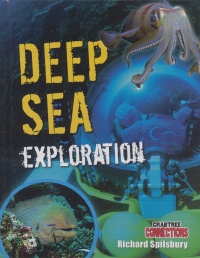 |
Deep Sea Exploration. (Crabtree Connections).
Richard Spilsbury.
St. Catharines, ON: Crabtree, 2011.
32 pp., pbk. & hc., $9.95 (pbk.), $20.76 (RLB.).
ISBN 978-0-7787-9914-6 (pbk.), ISBN 978-0-7787-9893-4 (RLB).
Subject Heading:
Underwater explorations-Juvenile literature.
Grades 3-6 / Ages 8-11.
Review by Suzanne Pierson.
***½ /4
|
| |
|
 |
Water Wise! (Crabtree Connections).
Alison Hawes.
St. Catharines, ON: Crabtree, 2011.
32 pp., pbk. & hc., $9.95 (pbk.), $20.76 (RLB.).
ISBN 978-0-7787-9925-2 (pbk.), ISBN 978-0-7787-9904-7 (RLB).
Subject Headings:
Water conservation-Juvenile literature.
Water supply-Juvenile literature.
Grades 3-6 / Ages 8-11.
Review by Suzanne Pierson.
***½ /4
|
| |
|
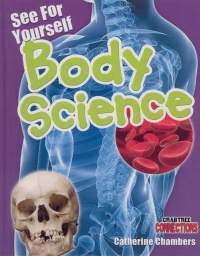 |
See for Yourself: Body Science. (Crabtree Connections).
Catherine Chambers.
St. Catharines, ON: Crabtree, 2011.
24 pp., pbk. & hc., $7.95 (pbk.), $18.36 (RLB.).
ISBN 978-0-7787-9972-6 (pbk.), ISBN 978-0-7787-9950-4 (RLB.).
Subject Headings:
Human body-Juvenile literature.
Human physiology-Juvenile literature.
Human anatomy-Juvenile literature.
Grades 3-6 / Ages 8-11.
Review by Suzanne Pierson.
***½ /4
|
| |
|
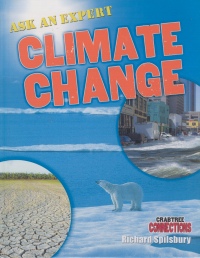 |
Ask an Expert: Climate Change. (Crabtree Connections).
Richard Spilsbury.
St. Catharines, ON: Crabtree, 2011.
24 pp., pbk. & hc., $7.95 (pbk.), $18.36 (RLB.).
ISBN 978-0-7787-9960-3 (pbk.), ISBN 978-0-7787-9938-2 (RLB.).
Subject Headings:
Climactic changes-Juvenile literature.
Global warming-Juvenile literature.
Grades 3-6 / Ages 8-11.
Review by Suzanne Pierson.
***½ /4
|
| |
|
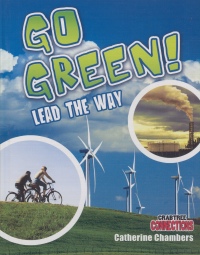 |
Go Green! Lead the Way. (Crabtree Connections).
Catherine Chambers.
St. Catharines, ON: Crabtree, 2011.
24 pp., pbk. & hc., $7.95 (pbk.), $18.36 (RLB.).
ISBN 978-0-7787-9969-6 (pbk.), ISBN 978-0-7787-9947-4 (RLB.).
Subject Headings:
Environmentalism-Juvenile literature.
Green movement-Juvenile literature.
Grades 3-6 / Ages 8-11.
Review by Suzanne Pierson.
***½ /4
|
| |
|
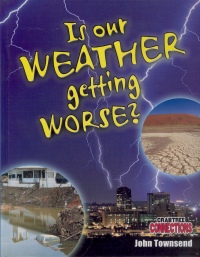 |
Is Our Weather Getting Worse? (Crabtree Connections).
John Townsend.
St. Catharines, ON: Crabtree, 2011.
24 pp., pbk. & hc., $7.95 (pbk.), $18.36 (RLB.).
ISBN 978-0-7787-9979-5 (pbk.), ISBN 978-0-7787-9957-3 (RLB.).
Subject Headings:
Weather-Juvenile literature.
Climactic changes-Juvenile literature.
Grades 3-6 / Ages 8-11.
Review by Suzanne Pierson.
***½ /4
|
| |
|
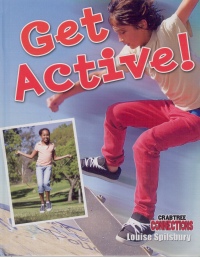 |
Get Active! (Crabtree Connections).
Louise Spilsbury.
St. Catharines, ON: Crabtree, 2011.
24 pp., pbk. & hc., $7.95 (pbk.), $18.36 (RLB.).
ISBN 978-0-7787-9963-4 (pbk.), ISBN 978-0-7787-9941-2 (RLB.).
Subject Headings:
Exercise-Juvenile literature.
Exercise-Health aspects-Juvenile literature.
Grades 3-6 / Ages 8-11.
Review by Suzanne Pierson.
*½ /4
|
| |
|
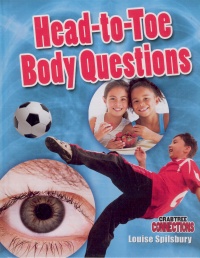 |
Head-to-Toe Body Questions. (Crabtree Connections).
Louise Spilsbury.
St. Catharines, ON: Crabtree, 2011.
24 pp., pbk. & hc., $7.95 (pbk.), $18.36 (RLB.).
ISBN 978-0-7787-9976-4 (pbk.), ISBN 978-0-7787-9954-2 (RLB.).
Subject Headings:
Human body-Juvenile literature.
Human physiology-Juvenile literature.
Human anatomy-Juvenile literature.
Grades 3-6 / Ages 8-11.
Review by Suzanne Pierson.
*½ /4
|
| |
|

excerpt:
Pebble Treasures
Visit shingle beaches to find pebbles rubbed smooth by crashing against each other in the sea. Look closely and you may also find sea glass or even gems like jet and agate. (From Coastal Treasure Hunter.)
This review looks at nine books in the "Crabtree Connections" series. Currently, there appear to be 36 books in this series grouped in related topic groups of three. The books I reviewed are about water, the environment, and the body.
The book covers are colour coded to indicate whether the focus of the book is Information, Instruction, Report, Persuasive, Explanation, Recount, Biography, Journalistic, and Formal. As there is no explanation, the colour coding isn't likely to be of any particular use to young readers, but it may be a helpful system for those purchasing the books. Once I deciphered the coding, I could see at a glance whether the format of a book was going to be to tell me a story (Recount), such as Deep Sea Exploration, or tell me how to do something (Instruction), such as Coastal Treasure Hunter.
The books follow a traditional organization with a table of contents at the beginning and an index at the end. Each book also includes a glossary and a further information page, containing both books and websites. www.davidsuzuki.org/kids and http://ryanswell.ca/projects/projects-needing-help.aspx are two excellent Canadian sites that are included in the lists.
The books are very colourful with an attractive layout, including photos, text boxes, and illustrations with many labels. Information is chunked and highlighted in creative ways to draw attention in a very reader-friendly way. Young researchers and readers trying to decipher nonfiction text will find the content easy to access.
The books often contain suggestions for activities or projects related to the content. In Water Wise!, for example, after an explanation of "Elephant toilets," young readers are encouraged to "Get together with some friends, and raise enough money to donate an Elephant toilet." (Elephant toilets are so called because they resemble elephants, but they are for people.)
If it were not for two shortcomings, these examples from this series would be outstanding.
My first concern is the fact that these books do not appear to be printed on recycled paper. Three of the books have an environmental theme and include some specific and practical suggestions for ways that students can implement change and the reasons why the world needs these types of changes. One of the suggestions is to plant a tree. It would be a better message if the paper the books are printed on was not part of the problem.
My second concern is the presentation of a food guide in two of the books that includes a Fatty and Sugary food group. I cannot recommend these books. Cupcakes, pop and chips are not a food group, and no book should represent them as such, especially a research book for children.
I have divided my review into two groups; seven titles are highly recommended and two are not recommended.
Highly Recommended titles:
Coastal Treasure Hunter is coded red for Instruction. Readers learn about plants, animals and manufactured 'treasures' that can be found along a coast. Safety is emphasized repeatedly as readers are taught how to prepare to be a treasure hunter and what to look for along the shoreline, in tide pools, and at the water's edge. At the end, instructions are included for making a wind chime from shells, driftwood and other 'treasures' found along coastal waters.
Deep Sea Exploration is orange for Recount. The reader is taken along as the narrator searches in a submersible for some of the most fascinating creatures on Earth deep below the ocean surface.
Our mission is to journey to this underwater world to find them. Are you ready for the trip of a lifetime?
A graphic, called a Depth Tracker, is included on every double page spread as a visual cue to highlight what part of the ocean is being explored on each page. In addition to some fascinating photos of undersea life, I loved the whimsy of the page numbers being contained in the open end of a periscope peering up from the bottom of the page.
Water Wise! is colour coded green for Persuasive. This is one of the books with an environmental message that tries to inform the reader of the reasons we need to use water more wisely and to persuade them to take action. Throughout the book are text boxes asking the question, "What can I do now?" Answers range from finding ways to reuse water, writing to government, and supporting a water charity, such as Ryan's Wells.
See for Yourself: Body Science is blue for Information. This book puts the body under the microscope, examining blood, heart, liver and kidneys, lungs, ears, nose, and throat, eyes, skeleton, and skin. This is a very informative and highly readable book for young researchers. One interesting part of the text layout is a body blog with questions from READER, and answers from BODY BLOGGER. There is an amazing picture of blood seen under a microscope, showing the four main parts; plasma, platelet, red blood cells, and white blood cells.
Ask an Expert: Climate Change is gold for Explanation. A cartoon graphic of a young scientist in lab coat, and safety glasses holding a test tube highlights many facts about climate change, such as:
The average temperature on Earth is rising. The years between 1996 and 2008 were the warmest since 1850. We call this global warming.
The text is presented in the first person, with the cartoon scientist as the narrator. Photos from around the world of droughts, floods, and other severe weather support the content of the text.
Go Green! Lead the Way is green for Persuasive. This book informs the reader of both the problems and the actions required to make a difference. Topics include water, forests, farming, building, pollution, tourism, and plastics. Solutions include actions that students can easily put into place immediately, including, 'Turn the faucet off while you are brushing your teeth.'
Is Our Weather Getting Worse? is blue for Information. A weather data record sheet for Toronto for June 2009 shows the kind of information that is collected. Photos show some weather extremes. Predictions of worse weather for the future due to rising temperatures are followed by the caveat – unless we do something about it. The book concludes with suggestions for things that we can do to reduce our carbon footprint. Unfortunately, none of the suggestions is to use recycled paper. Too bad.
Young readers and researchers are going to enjoy these books. They are visually appealing without compromising on the readability of the content. I recommend that you preview each of the other titles from the series that you are considering purchasing to confirm that there is no misinformation, such as the creation of a fifth food group of pop and chips.
Not Recommended titles:
Get Active! is green for Persuasive. This book contains information about building muscles and bones with proper food, water, exercise and safety. Unfortunately, when discussing which foods help you to be active, the image of a food plate showing the proportions of foods you need includes five food groups instead of four: fruits and vegetables, grain foods, protein foods, milk and dairy foods, and fatty and sugary foods. Although the portion is small, the message that we need the chips, cupcake, and sugar cubes in the illustration is simply wrong.
Head-to-Toe Body Questions is gold for Explanation. Topics include, Why does waste smell bad?, Why do people sneeze? and my personal favourite, Why do stomachs rumble? Unfortunately, this is the other book that includes a fifth good group, this time illustrated with a can of cola and a chocolate bar. Sorry, but that misleading and potentially harmful information puts this on my do not buy list.
Highly Recommended [See review for specific titles] & Not Recommended [See review for specific titles]
Suzanne Pierson is a retired teacher-librarian, currently instructing Librarianship courses at Queen's University in Kingston, ON.

To comment
on this title or this review, send mail to cm@umanitoba.ca.
Copyright © the Manitoba Library Association. Reproduction for personal
use is permitted only if this copyright notice is maintained. Any
other reproduction is prohibited without permission.
NEXT REVIEW |
TABLE OF CONTENTS FOR THIS ISSUE
- October 28, 2011.
AUTHORS |
TITLES |
MEDIA REVIEWS |
PROFILES |
BACK ISSUES |
SEARCH |
CMARCHIVE |
HOME |








